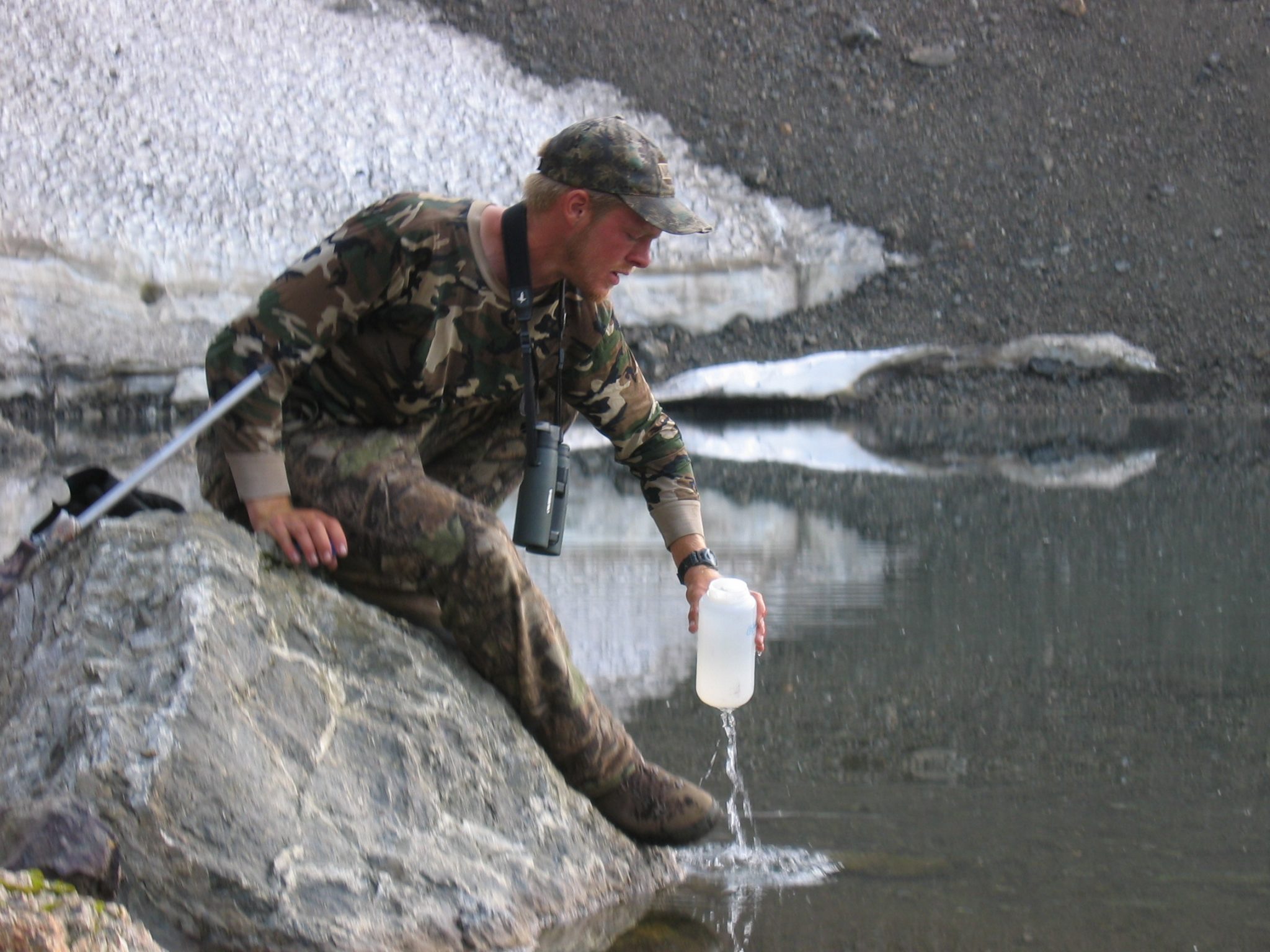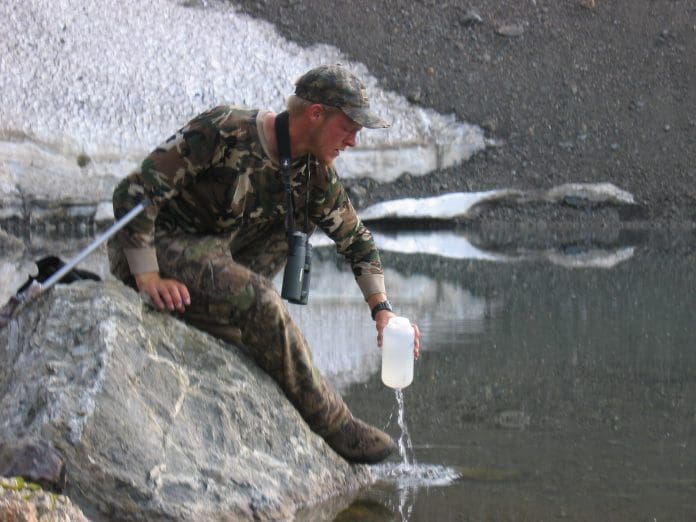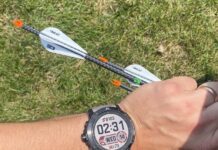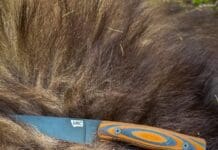
Backcountry Water Sources and Purification
By Jason Brooks, Guest Contributor
A few years ago while in Idaho’s backcountry hunting mule deer and elk, the hard lesson of how important water is to the hunt was imparted on me. A few miles from camp was an old Native American shelter with some paintings. After a few days hiking up the hills above the Salmon River my hunting partner and I decided to find the shelter as a way to unwind for a day. Being a November hunt you never know when you will come across a rutted up mulie or a nice bull so I took my rifle, a flashlight, and knife. An hour later we found the rock overhang looking over a set of rapids. Just then I spotted a herd of elk near a far ridgeline with at least one legal bull. Taking advantage of what daylight we had left; once again we found ourselves hiking up and out of the river drainage.
 Small, fast running streams near melting snow are good water sources in the backcountry
Small, fast running streams near melting snow are good water sources in the backcountry
Two hours and four-thousand feet later I shot the bull just before last light. After the adrenaline wore off we realized how thirsty we were. Neither of us brought water or even a container to fill after we reached the river again. A lone pine tree on the open slope shielded a small patch of snow in its shadow. Trying to find patches of snow that were not sprinkled with elk droppings proved to be a challenge so we just took what we could find that was still stuck to the pine branches. We both felt the snow was relatively safe but it was not nearly enough to quench our thirst.
Hunting the backcountry means hiking far from trailheads and roads. Lightweight rifles, sleeping bags, tents, and packs are all the rage as one tries to cut down any additional weight. Water is one of the necessities no matter if you are far from the truck or are hunting from a roadside campground. It is also one of the heaviest items a hunter will carry at just over eight pounds per gallon. Water is not one of the items that can be cut from the pack or left at camp to be used once the day is over, as my impromptu elk hunt proved.
 Springs right out of the ground are often thought of as ‘safe’ water sources but never drink water without purifying it first
Springs right out of the ground are often thought of as ‘safe’ water sources but never drink water without purifying it first
A hunter has few choices when it comes to drinkable water. You can either choose to carry a full day’s supply or elect to hunt where water can be found throughout the day. Both decisions still require you to drink clean water. This adds another necessity, a way to clean or purify the water.
Filtered water is clean and contaminant free. There are a few different ways to filter water with the hand pump being the most common. Simply put one end of the intake hose into the water source and then pump the water through the filter and out of an outlet hose into your container. You can also use this system with a variety of water sources from springs, to creeks, and even mud puddles after a hard rain.
 Two common water purifiers, the hand pump filter system and the lightweight Steri-Pen that uses UV light to kill any bacteria
Two common water purifiers, the hand pump filter system and the lightweight Steri-Pen that uses UV light to kill any bacteria
The newer hand pump systems are fairly lightweight and don’t take up much space in your pack, allowing you to carry it and stop at any water source to refill your canteen. Sounds simple enough but there are a few drawbacks to these systems. The first being that it is mechanical and on one late season trip I found out that if you don’t dry out the pump then it can freeze at night causing a crack in the housing and the pump is now non-operable leaving you with no way to filter your water. Another drawback is that the pumping of the water is time consuming and can be tiring, especially if you have been carrying a heavy pack all day.
 The gravity bag filter system being used to fill my water bottle
The gravity bag filter system being used to fill my water bottle
For several years I opted to hike into the high country and put my tent within a half-mile of a water source. This allowed me to use a base camp gravity water filter system. I didn’t have to carry a filter or purifier with me throughout the day. One downfall is that if the water source is one of only a few around then you are putting your camp close to where the game needs to get water and you risk pushing them out of the area. However, the water purifier I chose to use was a bag filter system that is gravity fed. Simply fill the bag with water, carry it back to camp and hang it from a tree. Anytime you want clean water just open the valve and sit back while gravity pushes the water through the filtration system and into your container.
 Andy Byrd takes a break while re-filling his water bottle using a gravity water bag system
Andy Byrd takes a break while re-filling his water bottle using a gravity water bag system
The gravity bag system is extremely lightweight with no moving parts. It is virtually foolproof and easy to use with just a few drawbacks. The first being if the outlet hose freezes you will need to warm it up to allow water to flow freely. The other is that you must carry water back to camp, usually in the filter bag which I have had leak onto my backpack and soak me. Once you are out of water you need to make another water run. You carry the clean water throughout your day so expect to start off with a heavy pack in the morning and portion your water during the hunt.
Purifying water is not necessarily filtering it. You can purify your water by using iodine pills or drops which leaves the water tasting awful and long term use of iodine is not good for your body. But it works in a pinch, and is always a smart idea to keep a few tablets in a survival kit. New to the water cleaning world is the use of a sterile pen, or “Steri-Pen” which uses ultraviolent light to kill any bacteria, protozoans (such as giardia and roundworms) algae and other micro-organisms that can hurt and even kill us in the backcountry. Though this is a fairly new method for hunters, hikers, and campers, it is not new to water purification as large scale water companies have been using UV light for several years. In fact, most of the bottled water we buy in grocery stores goes through a final purification process of UV light.
 A hand pump filter system allows you to purify water from small sources such as a spring or a seep
A hand pump filter system allows you to purify water from small sources such as a spring or a seep
The Steri-Pen is lightweight and as long as you can fill your container with whatever water source you are using then you can purify the water with the pen. It takes very little effort to use, in fact, all you do is put it into a one-quart container, push a button, and stir it for ninety seconds. But don’t confuse filtering water and purifying water as the same thing. If you use a filter then the water is stripped of dirt and other contaminants but using a Steri-Pen or Iodine tablets does nothing to remove any dirt, grass, mud, or other contaminants from the water. This is why they should only be used from “clean” water sources such as running water. All the Steri-Pen and iodine tablets do is kill any of the “bad things” in the water, not actually clean it.
Boiling water is much like using iodine tablets or the Steri-Pen as it kills the bacteria, micro-organisms, and other contaminants. Boiling also allows you to use one water source that purifying and filtering systems don’t work on and that is snow. Of course there are several downfalls to boiling water with the most problematic being the use of fuel and limits amounts to the container you use to cook with. Plus, it is time consuming.
 A marmot, which can contaminate an alpine water source, so make sure you purify all of your drinking water
A marmot, which can contaminate an alpine water source, so make sure you purify all of your drinking water
Water sources might determine which kind of water cleaning system you use. In the backcountry there are various ways to get your drinking water and it can even change due to the time of year you plan on being in the backcountry.
One fall, I was hunting mule deer along the Cascade crest in Washington in mid-September. It hadn’t rained in a few weeks and water was becoming scarce. Then as we crossed a large scree field I noticed something shiny in-between the boulders. It was a small spring, about two feet around and only a few inches deep. Thinking this was the source and nature had filtered the water through sand, moss and the rocks we began filling our empty water bottles and drinking the “clean, cold, mountain water”.
After we got our fill and slowed down enough to look closely at the seep it was then that we noticed fine white hairs floating on the surface. To make matters worse, littering the bottom of the spring was Marmot droppings! We had seen several Marmot’s during the day but the thought of this being their water source and bathroom didn’t cross our minds during our time of thirst. Luckily none of us got sick but we learned another valuable lesson: never take for granted any water source, even if you think it is right where it comes bubbling out of the ground.
 A small spring with nature’s filter, moss, in an alpine meadow is a good source for water, but you should still purify!
A small spring with nature’s filter, moss, in an alpine meadow is a good source for water, but you should still purify!
Tarns are small, high mountain lakes, where the ground was carved out by glaciers eons ago and now fill with rain water. Some are small ponds or even large puddles and others can be a lake. Being standing water means mosquitos and other insects lay their larvae in them. Plus, animals will urinate and defecate around the edges while getting a drink. If the tarn is near a popular hiking trail system, then summer hikers can leave behind unwanted waste that contaminates the water source. It is the tarn that bothers me the most when I have to use them for my drinking water, no matter how much I filter it I still think of all of the fecal matter that has collected throughout the summer and leached into the tarn. I often will hike around the tarn looking for a small tributary or even an outfall where the water has run through sand and moss.
 Snow might seem clean but it usually is full of dirt and other contaminates
Snow might seem clean but it usually is full of dirt and other contaminates
Snow is often found at high elevations, even during the early fall. Glaciers and snow fields provide water. Save the valuable stove fuel and look at the downhill side to find the melting snow. Even a trickle can fill your water bottle quickly where you can then use a Steri-Pen or filter it into another container. I carry a couple of gallon size zip-loc bags for various reasons and one of them is to help collect water from small sources where I can then filter it into my drinking container.
Springs are found on hillsides and usually have thick vegetation around them. The vegetation can help filter out some of the larger particles but is also helps collect smaller organisms. Later in the fall the vegetation can freeze and die and then collect in the water, often noticeable as “tea stained” water. Though this doesn’t look good it rarely hurts the drinking water but it should be a reminder to purify the water in some way as animals, such as mice, will use the water source and live in the surrounding vegetation.
 A tarn is an alpine lake, pond, or puddle caused by collected rainwater and are stagnant sources which oftentimes has micro-organisms and bug larvae
A tarn is an alpine lake, pond, or puddle caused by collected rainwater and are stagnant sources which oftentimes has micro-organisms and bug larvae
Streams and rivers are often thought of as “safe” water sources as they are running, clear, and cold. The volume of water often gives us a false sense of safety. One thing to remember about streams and rivers is that they are the collection of all other water sources and can be just as contaminated as a tarn or other stagnant source. The one benefit of a river or stream is that any of the water cleaning systems work with them. It is easier to collect clean, non-muddy water for a Steri-Pen or Iodine tablet. The gravity bag system collects water quickly and easily and any small pool or back-eddy is a great place to use your hand pump system.
 Filling the gravity bag system from a small spring; this is a very versatile filter system
Filling the gravity bag system from a small spring; this is a very versatile filter system
Water is a heavy, valuable, and life necessitating in the backcountry. It can also make us sick and even kill us if it is not treated properly. Depending on the water source, filtering and purifying methods will vary. Most of our options are lightweight, some are bulky, and some are mechanical which is prone to breaking. Filtering and purifying don’t mean the same things but as long as we kill all the bad “bugs” a little dirt won’t hurt us. When it comes to backcountry water it is worth the extra weight and bulk to carry the right cleaning system.
You can ask Jason questions or discuss this article here




















